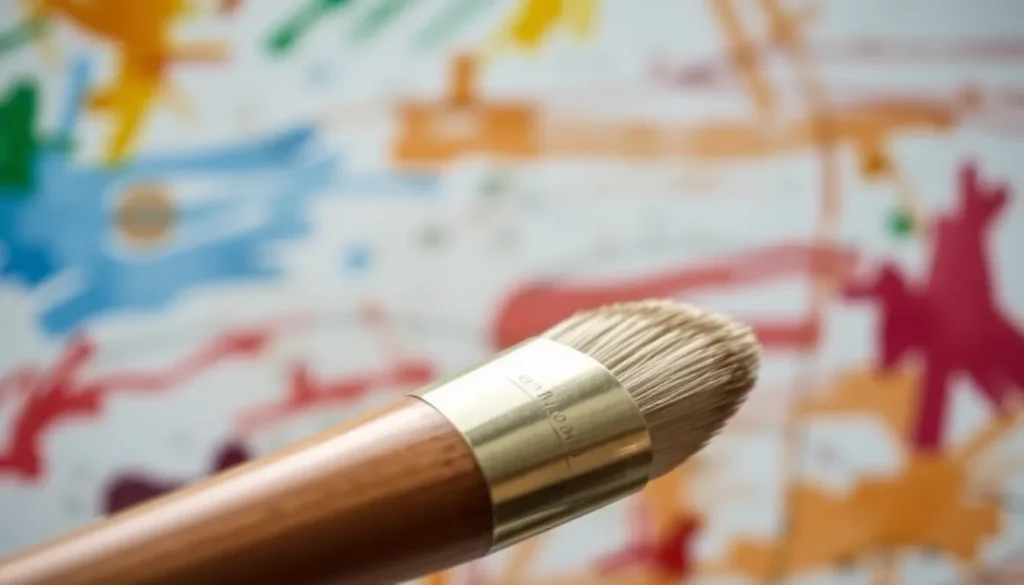Table of Contents
ToggleIn a world where staying connected is more important than ever, video calling has become the lifeline for friends, family, and even coworkers. Whether it’s a spontaneous chat with a friend or a serious meeting with the boss, knowing how to video call between iPhone and Android can save the day. But let’s face it, navigating the tech jungle can feel like trying to teach a cat to fetch—frustrating and slightly absurd.
Fear not! This guide is here to demystify the process, making video calls a breeze for everyone, regardless of their device. With just a few taps, they’ll be able to bridge the gap between Apple and Android, proving that love (and laughter) really knows no platform. So grab that phone and get ready to connect like never before—because who doesn’t want to see their friends’ faces in glorious HD?
Overview of Video Calling
Video calling gained popularity as a vital tool for communication. Users appreciate the ability to see and hear each other in real-time, which enhances conversations. iPhone and Android devices each offer unique video calling applications, making cross-platform connections easier.
Apple’s FaceTime stands out among iPhone users. This application supports high-quality video and audio calls, integrated seamlessly into the device’s operating system. Android users often rely on Google Duo, known for its user-friendly interface and impressive video quality. Some apps, like WhatsApp and Zoom, function across both platforms, broadening connection options.
Video calling uses internet connectivity, requiring a stable Wi-Fi or cellular data connection. A weak signal can impact video quality, leading to lag or dropouts. Users should ensure they’re connected to a strong network for the best experience.
Understanding the features of each platform enhances user experience. Features like screen sharing and virtual backgrounds add value during calls. Users can personalize their calling experience; adding filters or effects fosters creativity, keeping interactions fun.
Security remains a priority for video calling applications. Both FaceTime and Google Duo utilize end-to-end encryption, ensuring conversations stay private. Users should review privacy settings and permissions to safeguard personal information.
Technical issues may arise occasionally, but solutions exist. Users experiencing difficulties often find restarting the application resolves many problems. Keeping apps updated ensures access to the latest features and security improvements.
Connecting through video calls fosters relationships, making distance feel manageable. The convenience of iPhone and Android video calling brings families and friends closer together. Each platform offers tools for effortless communication, reinforcing the bond shared among users.
How Can iPhone and Android Video Call?
Video calling between iPhone and Android devices remains accessible and straightforward. Users can connect effortlessly through various applications that support cross-platform communication.
For iPhone Users
iPhone users rely primarily on FaceTime for video calls. This application provides high-definition video quality and integrates easily with the contact list, minimizing the setup time. To start a FaceTime call, users tap on the contact and select the FaceTime option. For those needing cross-platform compatibility, WhatsApp serves as a viable alternative, enabling video calls regardless of the operating system. Users should ensure the latest app version for optimal performance and security.
For Android Users
Android users often prefer Google Duo, which offers simplicity and excellent video quality. Starting a call is as easy as selecting a contact from the Duo app. Google Duo also supports features such as group video calls, adding to the versatility of communication. WhatsApp provides another effective option for Android users, allowing seamless video calls with iPhone users. Maintaining a stable internet connection proves critical, as it directly affects call quality.
Popular Video Calling Apps
Video calling apps connect iPhone and Android users seamlessly. Various applications offer unique features for enjoyable conversations.
Apps for iPhone
iPhone users often choose FaceTime for its intuitive design and high-definition video quality. This app allows effortless integration with the Contacts app, making it easy to connect with friends and family. Another popular option, WhatsApp, supports cross-platform video calls, enabling smooth interactions with Android users. Users appreciate its reliable performance and user-friendly interface. Additional features like stickers and messaging enhance the overall experience.
Apps for Android
Android users frequently opt for Google Duo due to its simplicity and excellent video clarity. This app provides features like live translation and low-light mode, improving call quality in various environments. WhatsApp remains a strong contender, allowing seamless cross-platform interactions with iPhone users. Users enjoy its end-to-end encryption, prioritizing privacy during calls. With these apps, maintaining connections across devices stays straightforward and efficient.
Tips for Better Video Calls
Ensure a strong internet connection before starting a video call. A stable Wi-Fi signal or a solid mobile data connection significantly enhances video quality. Opt for a quiet location free of distractions. Background noise can interfere with conversations and make it difficult to hear.
Adjust lighting for optimal visibility. Natural light works best, but if that’s not available, ensure your face is well-lit without strong shadows. Use the front camera instead of the back camera for better framing and focus on faces. This helps in maintaining a personal touch during conversations.
Explore additional features of your video calling apps. Both FaceTime and Google Duo offer options like screen sharing, allowing users to show photos or videos easily. Utilize the low-light mode available on Google Duo when in darker settings. This improves visibility and ensures clear communication.
Test your audio settings prior to joining a call. Ensure the microphone and speakers function correctly, so participants hear each other without issues. Mute the microphone when not speaking to reduce background noise.
Practice using the app features. Familiarizing oneself with virtual backgrounds or filters can add fun and creativity to calls. Invite others to join group calls, making it easier to connect with multiple friends or family members.
Maintain eye contact with the camera, which creates a more engaging experience. Avoid looking at the screen while speaking, as this can diminish connection with your conversation partner. Adjust the camera angle for a flattering view, keeping it at eye level for a more natural interaction.
Stay updated on app versions to benefit from the latest features and security improvements. Regular updates often include bug fixes that enhance overall performance. Following these tips creates a smoother and more enjoyable video calling experience.
Video calling has become an essential way to stay connected in today’s digital age. Whether using FaceTime on an iPhone or Google Duo on an Android device, users can easily bridge the gap between platforms. With a variety of apps available like WhatsApp and Zoom, maintaining relationships across different operating systems is simpler than ever.
By following the tips provided for optimal video calling experiences, users can enhance their interactions and enjoy clearer, more engaging conversations. Prioritizing internet stability and utilizing app features will make each call more enjoyable. Ultimately, embracing video calling technology brings loved ones closer together, making distance feel less daunting.










